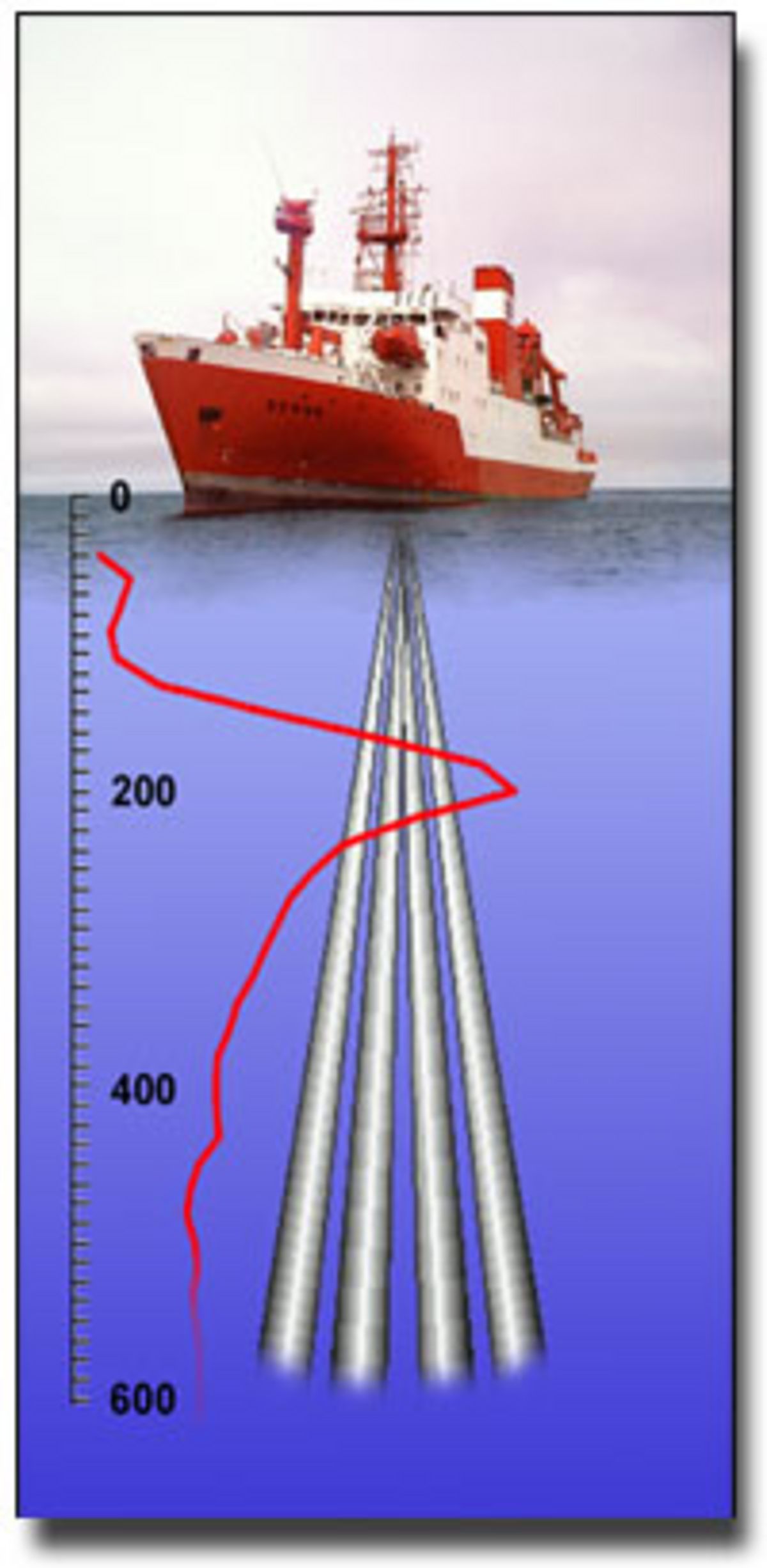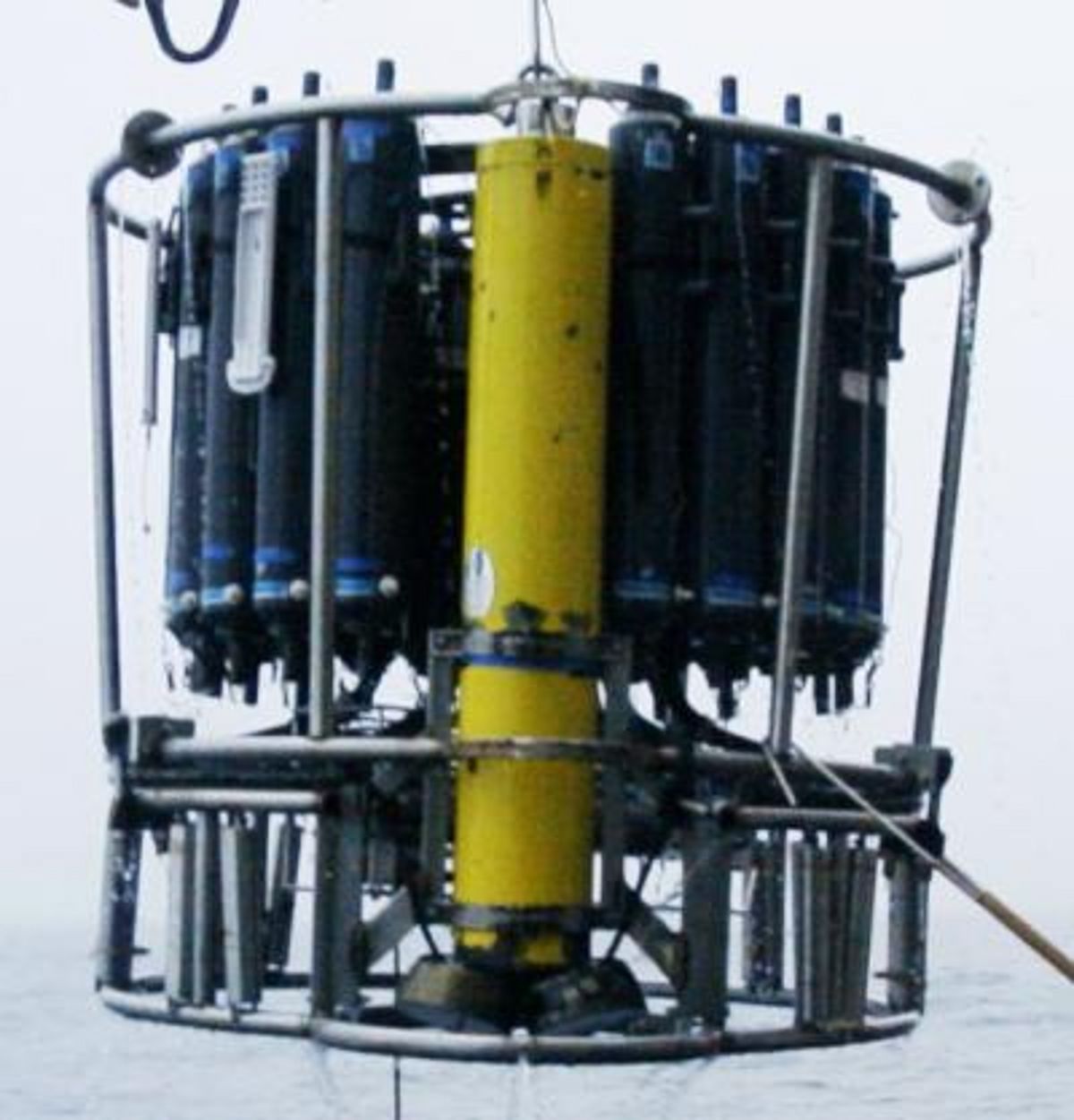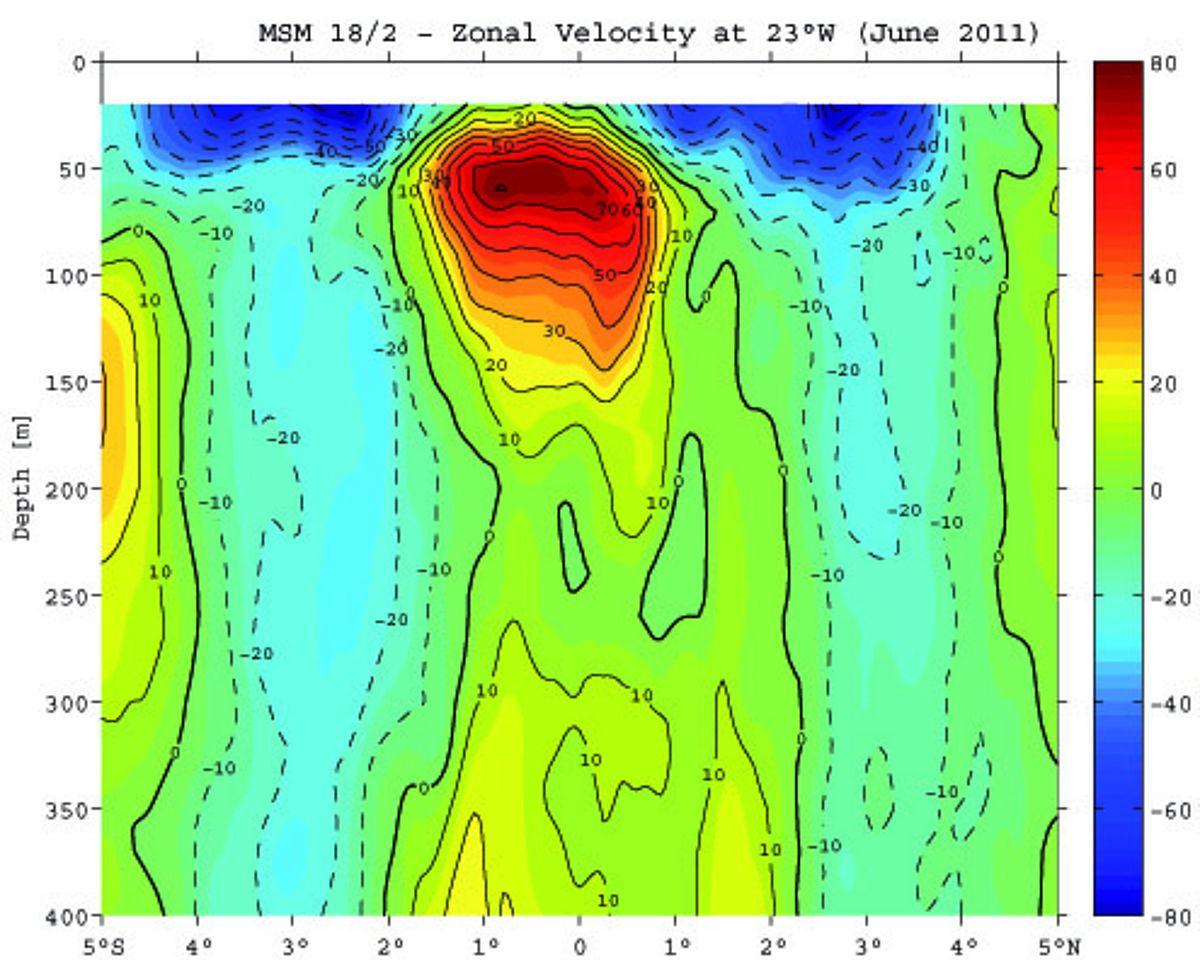Nowadays, most current measurements are taken acoustically, i.e. by using the so-called Doppler effect: The frequency of a reflected acoustic signal changes as the target (or reflector) moves relative to the sound source (transponder). This phenomenon is well known as the sound of a passing car changes when it moves past the observer. The transponder of the ADCP sends out a sound wave with a well-defined frequency. This wave is reflected by particles moving with the water flow. The travel time of the reflected sound wave is indicative of the distance from the transducer, i.e. the depth. The frequency shift is indicative of the particle or water speed. An ADCP (Acoustic Doppler Current Profiler) can then provide vertical profiles of horizontal currents of up to 1600m deep.
These devices can be used in moorings where they obtain measurements at a single location for extended time periods, or installed in research or commercial vessels to obtain vertical profiles along the ship’s track. This allows quasi-synoptic surveys of the velocity field.
Another option is to mount an ADCP on the CTD rosette to lower it through the water column, the so-called LADCP (Lowered ADCP). The series of vertical profiles over shorter depth ranges is then merged to obtain a full-depth profile of the horizontal velocities. The entire CTD/LADCP package then provides a full-depth profile of hydrographic and velocity data.





